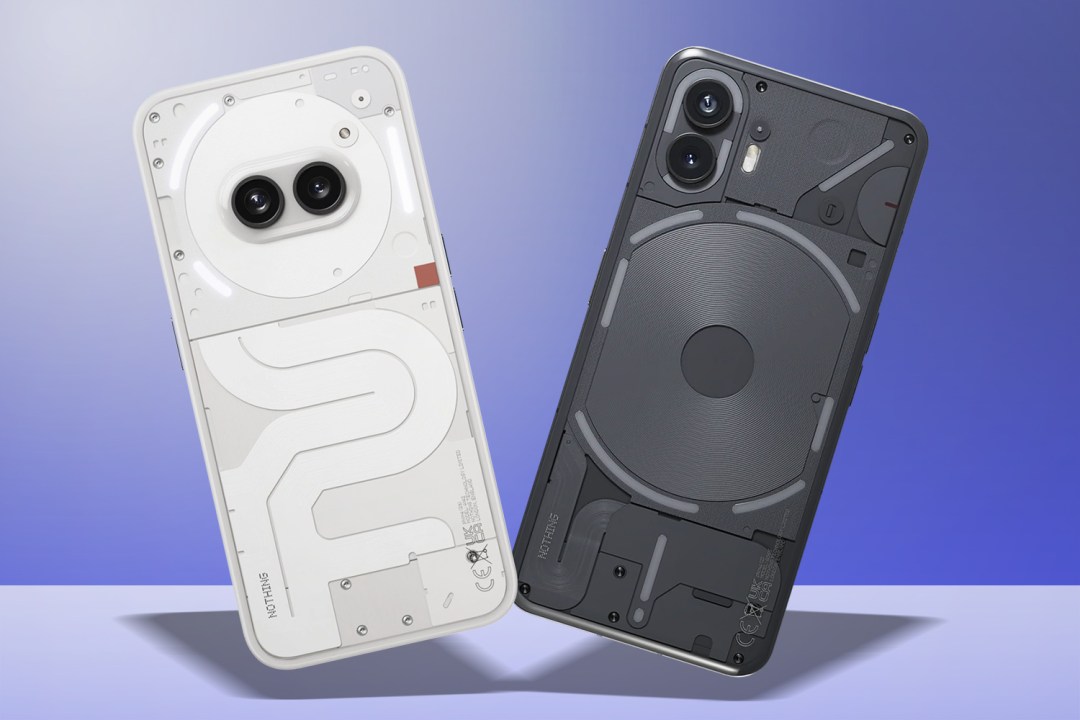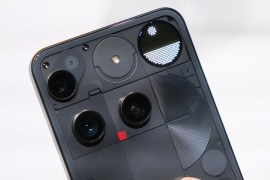Nothing Phone 2a vs Phone 2: what’s the difference?
Two takes on see-through styling and keenly-priced performance. Which is best for you?

Nothing burst onto the affordable smartphone scene back in 2022, and continues to impress with each new instalment. The firm’s latest is Phone 2a. It dilutes down some of Nothing’s trademark features, like the glyph lights and transparent design, while retaining punchy performance and cameras that punch above their weight.
The Nothing Phone 2a has a bigger brother, of course. The Nothing Phone 2 is as close as it gets to a flagship phone in Nothing’s world, with more powerful internals and the full-fat glyph lighting experience. It costs a fair bit more, though. Does it now make more sense to opt for the unashamedly wallet-friendly replacement for the original Nothing Phone 1 instead?
In the Nothing Phone 2a vs Phone 2 showdown, here’s the tale of the tape.
How we test smartphones
Every phone reviewed on Stuff is used as our main device throughout the testing process. We use industry standard benchmarks and tests, as well as our own years of experience, to judge general performance, battery life, display, sound and camera image quality. Manufacturers have no visibility on reviews before they appear online, and we never accept payment to feature products. Find out more about how we test and rate products.
Design & display: two takes on transparent


Phone 2 was an evolution of Phone 1; it kept the same glyph lighting layout at the rear, stuck the dual rear cameras in the top left corner for a second time, and stuck with flat sides machined out of metal. A new dark grey colour replaced black, in order to better show off some of the visible circuitry, and white remained an option. The glass panel was given a more curvy treatment, and the display bezels up front were thinned out.
Screen size also grew to 6.7in, up from 6.55in on Phone 1. It’s an AMOLED panel underneath, with a better-than-Full HD resolution and dynamic 10-120Hz refresh rate. Brightness tops out at 1600 nits, with all the usual HDR format support. It’s easily on par with mid-range rivals for colour accuracy, vibrancy and contrast.
Phone 2a is a very different looking device. It ditches all but three glyph lighting panels, and moves them to surround a relocated camera bump at the top-centre of the rear panel. That panel is made from clear polycarbonate, with the visible circuitry reshaped to mimic the New York subway map. Its edges flow even more neatly into the flat central frame, which is also made from composite – albeit with aluminium underneath for extra rigidity.
Phone 2a’s screen setup is very similar to Phone 2’s. Its 6.7in AMOLED has even skinnier bezels (although I’m talking fractions of a millimetre) and its dynamic refresh rate is now 30-120Hz, but that’s still a great showing for a sub-£350 handset. Panel brightness tops out at a lower 1300 nits, too.
Which design is best largely comes down to personal preference. I think each has its charms, and both are clearly Nothing products, but I give the win to Phone 2 for its more premium materials and more eye-catching glyphs.
Performance & battery: price-matched power


Nothing opted for MediaTek power for Phone 2a, which proved controversial with a portion of its fanbase. The Dimensity 7200 Pro chipset is no slouch, though, comparing well to the affordable phone competition. There’s more than enough oomph here to play 3D games, run any Play Store app smoothly, and generally zip around Android without worrying you’ve bought a dud device. It can be had with 8GB of RAM and 128GB of storage, or 12GB and 256GB respectively.
There’s a sizeable 5000mAh battery inside, which is the biggest Nothing has fitted in a phone to date. It’s easily big enough for all-day use, unless you’re absolutely hammering games or constantly recording videos using those rear cameras. It refuels at a speedy 45W with the right power brick, although you don’t get one in the box. Wireless charging has also been sacrificed in order to keep costs down.
Qualcomm provides Phone 2’s power, courtesy of a Snapdragon 8+ Gen 1. This was a previous-generation flagship chipset when Phone 2 landed, but it was perfectly placed to best similarly-priced rivals that relied on more mid-range silicon. It comes paired with 8GB of RAM and 256GB of storage if you opt for the entry-level model, or 12GB and a choice of 256GB or 512GB of storage if you have more cash to splash. All are able to run games brilliantly well for the money, with most defaulting to their highest detail settings.
There’s a 4700mAh battery keeping Phone 2 powered, which isn’t massive, but still more than sufficient for a day of typical use. 4K video recording and gaming will see you reaching for a power socket a lot sooner. 45W over USB-C is a very decent showing, and you also have 15W wireless charging through any Qi-compatible pad.
Phone 2 takes the performance crown, and I love the option for wireless top-ups. Phone 2a can last just a little longer thanks to that beefier battery, but it’s not a two-day phone.
It’s worth pointing out that Phone 2a arrives running a newer version of Nothing’s fantastic Android skin. Nothing OS 2.5.3 adds even more useful homescreen widgets, including a very customisable camera widget that’s ideal for shutterbugs. There’s currently no word on when Phone 2 will get it via an update, but I’m expecting it to be fairly soon. Both phones are running Android 14 underneath (or at least they are after an OTA update; Phone 2 launched running Android 13).
Cameras: familiar but different


Phone 2 and Phone 2a each have a pair of 50MP rear cameras; one main and one ultrawide. Up front, the 32MP, f/2.5 selfie cam is identical across both phones.
While Phone 2 uses a Sony sensor for its lead camera, Phone 2a’s is supplied by Samsung. Size-wise they’re both 1/1.56in, and both see through an f/1.9 aperture lens. They also have phase-detect autofocus and optical image stabilisation. They’re not exactly level pegging on quality, with Phone 2 delivering more dynamic colours, superior sharpness, and better-judged HDR. Phone 2a leans a little towards overexposure, but still produces very nice looking images for a budget-minded device.
Each phone’s ultrawide sensor has an f/2.2 lens and 114-degree field of view. Only Phone 2 has a dedicated macro mode for close-up shooting, but Phone 2a can do a decent enough job if you switch to the Manual shooting mode. It also supports Google’s UItra HDR format out of the box; hopefully this is something Nothing will bring to Phone 2 in a later software update.
It would’ve been a real shock if Nothing had delivered a better camera in its more affordable handset. While the quality gap isn’t as wide as the price, I still give the win here to Phone 2.
Nothing Phone 2a vs Phone 2 verdict

Phone 2a and Phone 2 are two very different propositions. One is the best of Nothing; the other is a budget spin on the same formula. If you’re determined to spend less than £350/$399 on a smartphone, I think Phone 2a is an excellent choice. It has decent performance and battery life, takes perfectly pleasant looking photos, and has a rather tasty screen. The design is different yet distinctive, and the glyph lighting is still a fun take on notifications.
Does spending double the amount get you double the phone? Not quite – but there’s no doubt Phone 2’s fully-featured glyphs, more potent processor and more refined image processing make it the better handset overall. Just keep in mind there are rivals at this price that do great things on the camera front; Phone 2a is far more appealing among its peers.


